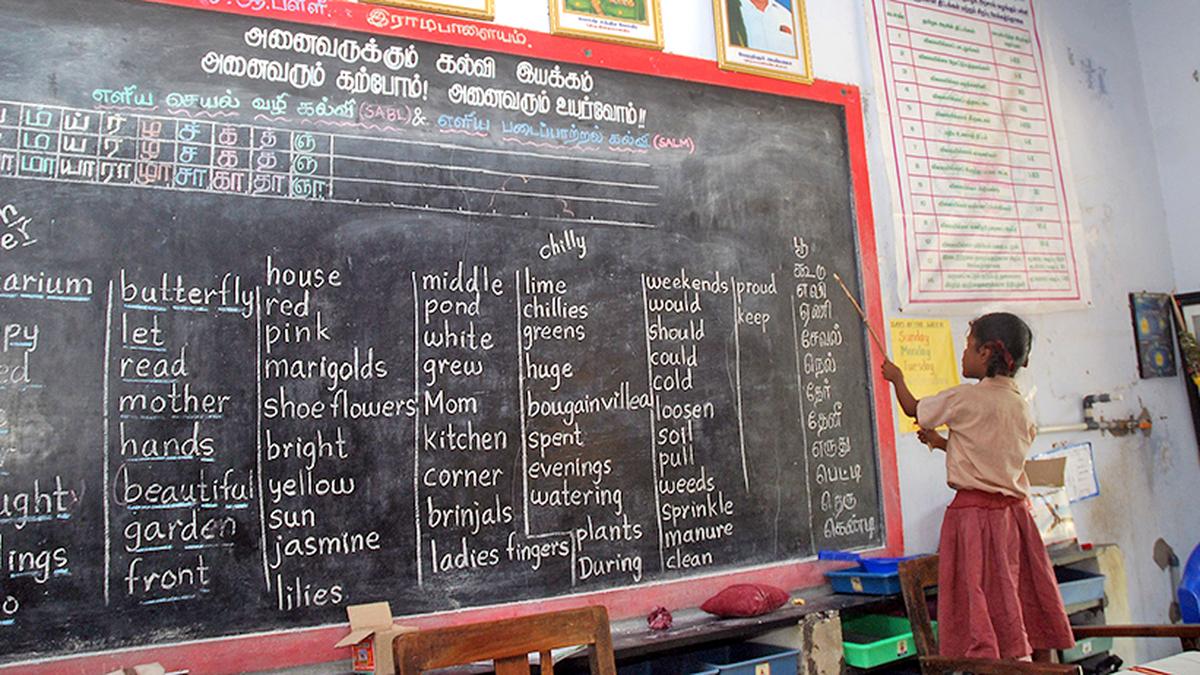The National Education Policy, 2020, encourages students up to at least Class 5 to learn a regional language in addition to the local language or mother tongue and English. While the Central government asserts that the choice of the additional regional language is left to the States, the NEP’s strong pitch for the three-language formula has led to fear, especially in Tamil Nadu, that there is an attempt being made to impose Hindi on non-Hindi speaking States. This week, Tamil Nadu Chief Minister M.K. Stalin dubbed the NEP a “Hindutva policy” aimed at promoting Hindi, rather than focusing on India’s overall development. Is learning Hindi as a third language necessary? Yogendra Yadav and T.M. Krishna discuss the question in a conversation moderated by K.V. Prasad. Edited excerpts:
Should learning a third language be made compulsory?
T.M. Krishna: If I may ask, why learn three languages? To be clear, we are not talking about students learning other languages of their own accord, which is anyway happening. A government that selectively deletes chapters from history textbooks, stating that there is too much of an education burden on students, is not even willing to look at the fact that learning another language is definitely a burden on them. Also, children in primary and middle school don’t have an imagination of time or the distant future. So asking them to learn a third language, in the name of future benefit, is basically an imposition. There is also the argument being made that learning more languages creates unity. This is a smokescreen. Forcing a language on someone is not unity.
Yogendra Yadav: Once we disentangle the idea of teaching three languages from Central imposition and the compulsion of Hindi, we can discuss the issue dispassionately. The point about the burden of education is something that experts have handled. They have come to the conclusion that if you teach a third language, it only helps your primary and secondary language, so I believe that the three-language formula merits serious consideration on grounds of pedagogy and national unity. As for practicality, I know of schools which do follow this formula. They do not give you the option of all the 22 languages (recognised in the Eighth Schedule of the Constitution), but they give you three or four options to choose from. These things can be worked out provided there is a political will and a capacity to teach anything at all.
If compulsory learning of an additional language will be a burden on students, will it not be equally burdensome on schools, since they will need qualified teachers and funds for this purpose?
Is it fair to make adoption of the three-language formula a pre-condition for the release of Central funds for schemes?
T.M. Krishna: It is unconstitutional, unethical, and devoid of any basis. Some people say, let the people decide whether they want three languages or two. But people did not decide about the three-language policy; individuals in the Union government made this decision.
Why is there so much resistance to an educational policy that stresses on the need to learn an additional language?
T.M. Krishna: Multilingualism is not just a political problem; it’s pedagogic too. The pedagogical methods have changed. At the primary and middle-school level, activity-based learning and experiential learning should be the focus. There are already two languages at play; that itself is multilingualism. I do not view multilingualism in terms of language alone; it is a way of making people be diverse in feeling and in being. People learn languages when they forge relationships, for instance. We can’t forget that cultural character and emotional connections make people learn a language.
Monolingualism is predominant in many Hindi-speaking States, irrespective of the three-language formula.
T.M. Krishna: It is difficult to get data on this, but I would like to know how many schools in north India that profess to teach three languages really do that. Is the policy actually being followed?
Yogendra Yadav: As I said, in most north Indian States, Hindi is taught along with English and Sanskrit. Sanskrit has become a way to bypass the requirement of the third language. So, technically, yes, it is followed.
T.M. Krishna: Exactly my point. There is a very important cultural point that needs to be understood about the Tamil people and the Tamil language. Tamil as a language is very distinct from every other Sanskrit-based or Sanskrit-derived language. Fundamentally, it is a very difficult task for a Tamil speaker to even learn Hindi or its cousin languages. In Tamil Nadu, people have learned other languages on their own. The dominant positioning of Sanskrit in the NEP, especially for a Tamil speaker, is intimidating especially when the language is so distinct and different grammatically and structurally.
Yogendra Yadav: To position Sanskrit as the sole carrier of our cultural heritage is a serious mistake. Besides, Sanskrit is not being taught to inculcate classical learning, but mainly to sabotage the three-language formula. In effect, Hindi speakers are not learning a new language or script.
What do you propose is the way forward to end the current stand-off?
T.M. Krishna: The distinctness is exactly why I feel there should be only two languages. English is already so distinct from whatever language you speak, be it Hindi or Tamil. Therefore, adding another language is not going to help.
Yogendra Yadav, psephologist and founding national president of Swaraj India; T.M. Krishna, carnatic musician and author
